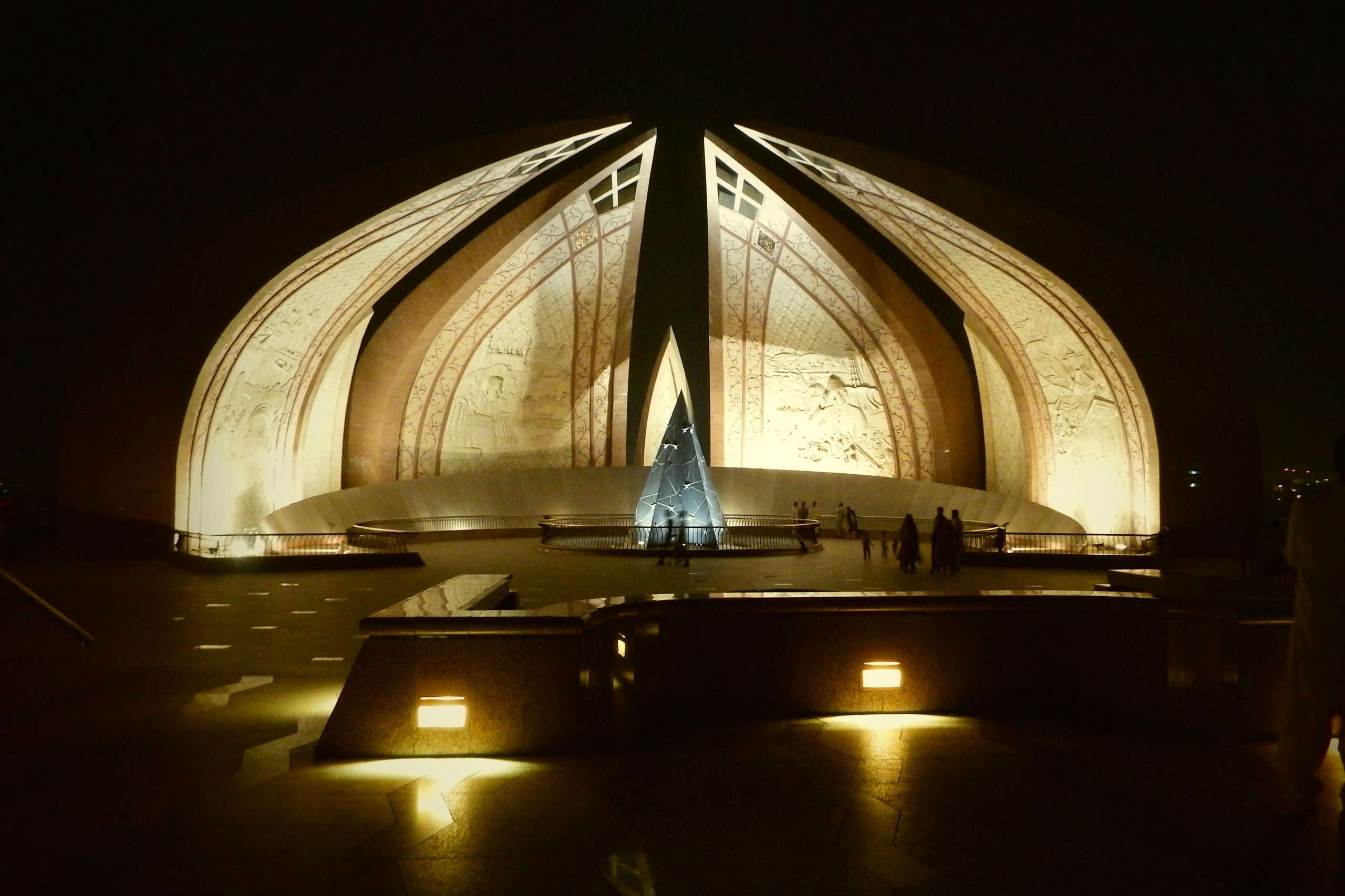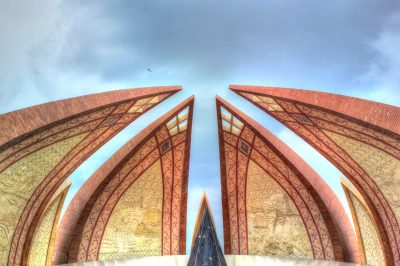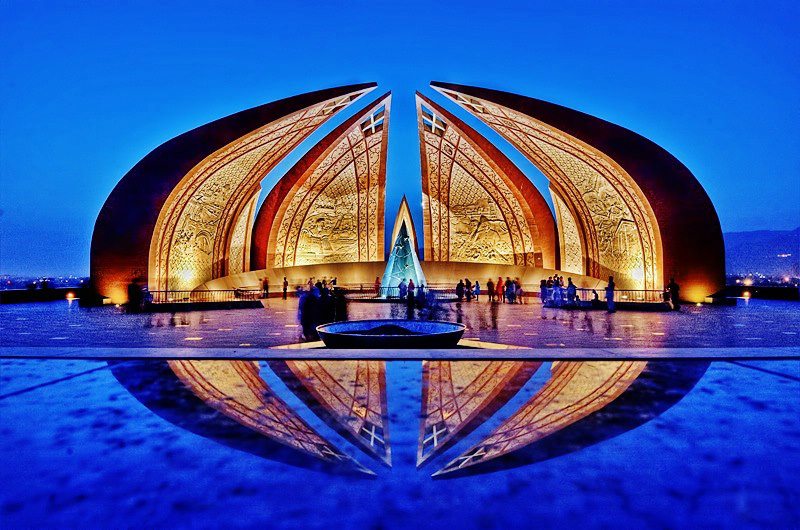The Pakistan Monument is a national monument and heritage museum located on the western Shakarparian Hills in Islamabad, Pakistan. The monument was constructed to symbolize the unity of the Pakistani people. It is dedicated to the people of Pakistan who sacrificed their “today” for a better “tomorrow.”
The four large petals represent each of the four primary cultures of Pakistan: the Punjabi, the Baloch, the Sindhi, and the Pakhtun. The three smaller petals represent the minorities, Azad Kashmir and Gilgit-Baltistan. Its elevation makes the monument visible across the Islamabad-Rawalpindi metropolitan area and is a popular tourist destination.

The plan for a national monument was first envisioned in 2005 by Uxi Mufti. The idea was later adopted by the Ministry of Culture led by Hamad Kashif. In 2005, the Pakistan Council of Architects & Town Planners organized a national monument design competition based on the theme of the people’s strength, unity, and dedication to an icon of an independent and free nation.
From a total of 21 submissions, three were short-listed. The final design proposed by Arif Masood was selected and approved on 10 July 2005. The foundation stone was laid on 25 May 2004, completed in 2006, and inaugurated on 23 March 2007 by President General Pervez Musharraf.
Also Read: China-Pakistan partnership transforms rural school in Azad Jammu and Kashmir
Covering a total area of 2.8 hectares (6.9 acres), the monument’s design is rooted in the rich Mughal architecture of the Subcontinent. Its petal-shaped structure is derived from the traditional muqarnas of Mughal architecture.
Opened to the public in 2007, the Pakistan Monument also houses a heritage museum, which showcases artifacts, exhibits, and multimedia displays highlighting the country’s history, culture, and achievements. Visitors can explore galleries dedicated to Pakistan’s heritage, offering a comprehensive understanding of the nation’s rich tapestry.
The architectural marvel was the vision of renowned architect Arif Masood, whose expertise and creativity brought the monument to life. Masood’s design seamlessly blends traditional Islamic and contemporary architectural elements, creating a visually striking structure that captivates the imagination.
The architect says about the design, “We should learn from history but not remain in it.” He used today’s technology to modernize the historical form of the muqarnas, a form of decorative vaulting in Islamic architecture.
Built as a tribute to those who devoted their lives to the advancement and development of the country, the monument stands as a symbol of resiliency and optimism. The design illustrates Pakistan’s journey towards unification and prosperity, which contains motifs reflecting the country’s rich cultural heritage and unique past.









